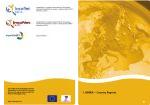


Official name of the country: The Kyrgyz Republic
Population: 6,019,000 (population growth rate: 2%)
Area: 199,900 km2
Capital: Bishkek
System of Government: Parliamentary Republic
Head of the State: Almazbek Atambaev, President
Head of the Government: Sooronbai Jeenbekov, Prime Minister
Minister of Education and Science: Elvira Sarieva
Parliament: Parliamentary speaker – Chynybai Tursunbekov
Administrative structure: Kyrgyzstan is divided into eight administrative districts and seven provinces (oblasts). Oblasts are divided into 39 districts. There are 4 districts in Bishkek. Districts consist of a total of 429 local communities (Ail Okmotu).
Geography: The Kyrgyz Republic was established on 31 August 1991, when the country's parliament officially declared the Kyrgyz Republic to be an independent, sovereign, democratic state with complete and indivisible territory and its own constitution. Kyrgyzstan is located in the north-eastern part of Central Asia. It stretches 900 km from east to west and 425 km from north to south. The borders of the Republic mostly lie on natural boundaries – the crests of mountain ranges, and rivers. Kyrgyzstan shares borders with China, Tajikistan, Kazakhstan and Uzbekistan.
Transition to sustainable development: In accordance with the National Strategy of Sustainable Development of the Kyrgyz Republic for 2017, the Government's programme and plan on transition to sustainable development (2013-2017) approved by the Decree of the Government of the Kyrgyz Republic No. 218 dated 30 April 2023 and approved by Decree of the Parliament of the Kyrgyz Republic N 3693 – V dated 18 December 2013, the main priorities of the Kyrgyz Republic are as follows:
Source: EIMO
Last update: August 2016
[PDF - 2.68 MB]

(general information - research structure - research policies - international cooperation) (URL: https://increast.eu/_media/Kyrgyzstan_Country_Report_EN_2016.pdf)
[PDF - 1.22 MB]

(November 2011, compiled as an annex to the "White Paper on Opportunities and Challenges in View of Enhancing the EU Cooperation with Eastern Europe, Central Asia, and South Caucasus in Science, Research, and Innovation".) (URL: https://increast.eu/_media/Country_Report_Kyrgyzstan_2011.pdf)
This external link opens a new window:
(general information about the country and its relations with the EU) (URL: http://ec.europa.eu/external_relations/kyrgyz_republic/index_en.htm)
This external link opens a new window:
(web portal in Russian language supporting Kyrgyzstan's participation in FP7) (URL: http://nlkr.gov.kg/fp7/)